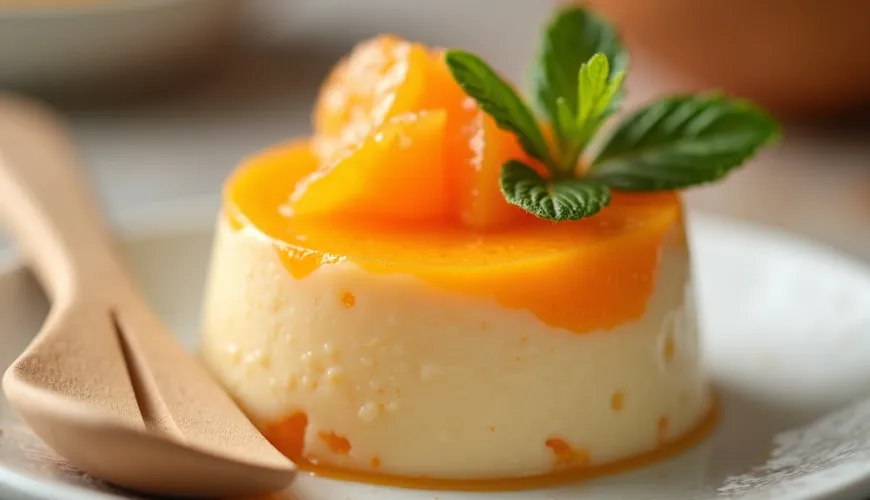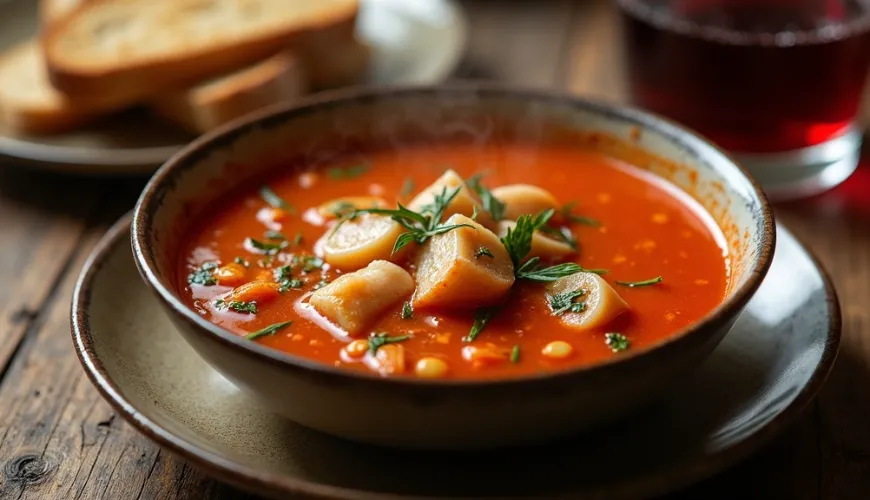
How Traditional Czech Apple Strudel Revives Childhood Memories

Why the Traditional Czech Apple Strudel Never Gets Old
In the memories of many people, the scent of apples, cinnamon, and vanilla holds a special place. It reminds them of childhood, grandma's kitchen, and Sunday afternoons spent at the table with family. The traditional Czech apple strudel is not just an ordinary dessert – it is a piece of tradition passed down from generation to generation. Especially in times when the world is constantly speeding up, returning to roots and honest home baking holds an irreplaceable place.
More Than Just a Dessert
At first glance, apple strudel might seem like just another sweet dish. But as we delve deeper into the history of Czech cuisine, we discover that it has held a firm place on tables in various regions for centuries. Although recipes may slightly vary by region or family customs, the basic principle remains the same: thin, stretched dough filled with apples, raisins, and cinnamon, baked to golden perfection and sprinkled with sugar.
The traditional Czech strudel is very similar to the Austrian Apfelstrudel, but its simplicity and delicate dough often surprise even seasoned gourmets. Most importantly – it is made from readily available ingredients found in almost every household.
Ingredients That Never Disappoint
The foundation of the traditional Czech apple strudel is the stretched dough – elastic, smooth, and so delicate that light almost shines through it. It's a test of patience and skill that brings a sweet reward. The dough usually contains plain flour, a bit of oil, a pinch of salt, and lukewarm water. No shortcuts, no semi-finished products. Just hard work and a proven method.
The filling plays an equally important role. Apples should be juicy but firm – ideally varieties like Jonagold or Boskoop, which hold their shape well and provide both sweetness and tartness. Raisins soaked in rum, ground cinnamon, and sometimes crushed walnuts or breadcrumbs to absorb excess juice are added.
And it's in these details that the beauty and challenge of traditional Czech baking are hidden – the strudel isn't just about the exact recipe, but about intuition, experience, and the willingness to improvise based on what the kitchen currently offers. Perhaps this is why it is so popular even today, as the role of ingredients is increasingly taken over by their origin and method of cultivation.
Traditional Recipe, Modern Approach
Even though the traditional Czech strudel is associated with tradition, there is no reason why it couldn't be part of modern cuisine. More and more people today are considering what they eat, where their food comes from, and its impact on health and the planet. And in this context, the strudel fits beautifully – with the right choice of ingredients, it can be not only delicious but also sustainable and healthy.
By using organic flour, local apples without chemical treatment, or plant-based alternatives instead of butter and eggs, a traditional dessert can become a delicious treat suitable for vegans or people with allergies. Moreover, its preparation can become part of a family ritual – from peeling apples to rolling and baking together.
For example, a family from South Bohemia who decided to spend a weekend without technology involved their children in the strudel preparation. The youngest peeled apples, the older son mixed the dough, and the parents took turns stretching the dough on a towel. The result was not just a delicious dessert but also a strong experience that the children remembered for a long time. "It was like going back in time. And the house smelled like grandma's," says Mrs. Jitka, who has been regularly returning to baking strudels since then.
Small Details Make a Big Difference
One of the magical aspects of the traditional Czech apple strudel is that it can be prepared without modern appliances. No robot, no special attachments. Just hands, a rolling pin, a towel, and patience. This may also be why its preparation is so meditative – one pauses for a moment, perceives the dough's texture, the apples' aroma, and the crunching sound at the first bite.
To truly make the result worthwhile, attention must be paid to details such as the correct distribution of the filling, firm but not excessive rolling of the strudel, or ensuring that the apple juice does not leak during baking. Baking a strudel is truly an art learned over years – but it's never too late to start.
If one doesn't have time for stretched dough, they can opt for puff pastry or shortcrust – that's another way to enjoy a sweet experience. But true lovers of tradition know that stretched dough has its unique charm that no substitute can replace.
Sustainability on the Plate
Nowadays, there's a lot of talk about the impact of food production on the planet. Preparing a traditional dessert like the traditional Czech strudel can also be an expression of conscious consumption. By using apples from the garden, surplus from the market, or organic varieties from a local farm, we support not only our health but also the local economy and a more gentle approach to the land.
Sources like Lovime.bio or farmers' markets offer seasonal fruit at fair prices and often without unnecessary packaging. By processing ingredients at home, we reduce waste, eliminate preservatives, and decide what we truly eat.
Moreover, home baking brings another unexpected bonus: the joy of creation. Each strudel is a little different, each has its character, and that's what makes it beautiful.
Old Recipes, New Generations
It's almost unbelievable how strong a bond an ordinary apple strudel can create. Many families have their own recipe, handwritten on yellowed paper, with notes in the margins and stains from apple juice. It is often passed down from grandmothers, and when someone bakes it again after years, it revives not only the taste buds but also memories.
Strudels were baked for festive occasions, fairs, weddings, or just with afternoon coffee. And even though times, ingredients, and eating habits change today, the desire for honest home-baked goods remains.
Perhaps this is why the traditional Czech apple strudel is coming back into fashion – not just as a nostalgic dish but as a symbol of sustainable cuisine that honors tradition, nature, and health. And as the old Czech saying goes: "What you learn in youth, you find in old age." Perhaps precisely when you want to delight your loved ones with something special yet simple.
And what about you? Do you have a favorite recipe from your grandmother, or are you just about to discover the magic of a strudel that smells like an autumn orchard? Either way, one thing is certain: the traditional Czech apple strudel will never go out of style.

